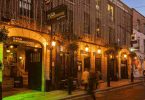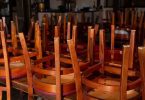Looking at classics
Generally speaking, a classic wine is one of high quality, from a well defined region, or sub-region, in which the wine styles have a noticeable degree of kinship. It’s often made from a “noble” grape variety, but not necessarily. Many classic wines are blends or made from what might be called grapes of the second rank but which reach high quality and character in particular places. France’s Chateauneuf du Pape is a case in point and there are smaller scale examples such as Marsanne in parts of Australia’s Victoria.
As well as having consistency across their region, classic wines should also show similar character through different vintages, allowing for weather related variations. Thus in blind tastings, where tasters are experienced, a classic should be recognisable. Sometimes, tasters will find a wine which doesn’t quite fit the classic criteria- it’s from outside a classic area, say, but made from the same grapes as a classic and shows some of its characteristics. For example, the wine could be a chardonnay from Chile which tastes similar to one from Burgundy’s Cote de Beaune; that’s when tasters say a wine has classic notes.
The most famed classics are European: cabernet merlots from Bordeaux, pinot noirs and chardonnays from Burgundy, syrah from Hermitage and Cornas in the northern Rhone. Tempranillo and garnacha based wines from Spain’s Rioja are classic as are the ports from the Douro Valley in Portugal. The sangiovese based wines from Italy’s Chianti, Montalcino and Montepulciano are classics as is nebbiolo from Barolo and Barbaresco in northern Italy. Italy and France also have a cluster of lesser classics: verdicchio from Castelli di Jesi, Rosso Conero from Abruzzo among the Italians, and in France, Loire Valley classics include chenin blanc from Vouvray and cabernet franc from Chinon.
Not every classic wine region is old, or, indeed Old World. New World producers have now a range of wines which have acquired classic status. Amongst them are Hunter Valley semillon, cabernets from Barossa and Coonawarra, Russian River chardonnay from California, sauvignon blanc from Chile’s Casablanca Valley, syrah/shiraz from Australia’s Yarra Valley, and pinot noir from Oregon’s Williamette Valley. Most New World classics are varietal wines but not always; it especially needs to be borne in mind that, perfectly legally, the wine may contain up to 25% of another variety. That’s why many New World cabernets are actually cabernet merlot blends like those of Bordeaux.
Nor are all classics expensive. Hunter Valley semillon is often laughably cheap for what you get and the same is true of much classic German riesling. But some acclaimed producers, especially in Europe’s classic regions, rest on their laurels; value for money is too often poor and the wines disappointing. It’s no comfort to the wine lover that the fame of these wines tends to be such that they sell out anyway. Generally the problem is not so much that the wines are bad; rather they have insufficient concentration of fruit to justify the price tag.
While times are tough, there are still occasions when consumers will push the wine boat out for special occasions. But they are less likely to take risks and familiar names on classic labels can provide reassurance of a good buy. So perhaps it’s a good time, with Easter coming up, to have small displays of classics on shop floors, along with descriptors explaining their history and style. Here are some examples tasted in recent months which offer good value; most would go nicely with a roast lamb dinner.
Whites
Chateau Bel Air Bordeaux Blanc 2007 (Barry Fitzwilliam €18). Price quality ratio is an issue in Bordeaux and many top names offer too little concentration for their prices. This is a classy, good value white made from sauvignon blanc with 30% semillon. Fresh green fruit and semillon driven citrus toastiness balance well here and this is good value for money.
Laroche Chablis St Martin 2009 (Classic Drinks €19). Crisp and tingling with decently intense citrus and green fruit, this a good introduction to the classic style.
Laroche Premier Cru Les Vaillons 2007 (€29) is denser and longer and a recent tasting of the 2002 shows it can age nicely too.
Simmonet Febvre Chablis 2008 (Gilbey Gleeson €19) is classier than its 2009 and excellent stuff.
Loosen Urzinger Riesling Kabinett Mosel 2009 (Nicholson €19). A classic German wine from a warm vintage, with noticeable ripeness to the typical green apple, grape and citrus flavours. Nevertheless, there’s plenty of acidity to balance. Great wine for roast pork.
Tahbilk Victoria Marsanne 2006 (Comans €12). Victoria marsanne starts out by being light and citrusy and, after ageing, develops dry lemon and spice with just a hint of petrol. Various vintages of Tahbilk lurk on off-licence shelves and this one is drinking nicely but will hold a while.
Sartarelli Verdicchio di Castelli de Jesi 2008/9 (Nicholson €12.50). This Italian classic runs on its zesty grapefruit nose and flavours which generally show noticeable length of finish. Oaked, the wines can age a bit but this style is best enjoyed in youth.
Tyrells Vat 1 Hunter Valley Semillon 2002 (Barry Fitzwilliam €19). Hunter Valley semillon is one of Australia’s most acclaimed classics. Like marsanne it is fresh in youth, with citrus and apple flavours which evolve into a dry lemon and nuts palate, often with waxy aromas. Again, you can get various vintages. McWilliams Mount Pleasant, if you can find it, generally offers outstanding value for money.
 Reds
Reds
Clairault Margaret River Cabernet Sauvignon 2005 (Febvre €19). A characteristic of Margaret Cab is to smell rather green and taste quite ripe. This vintage is nicely mature with leafy and mocha aromas leading to a smooth black fruit palate. 2007 has a leafy nose but enjoyably ripe fruits to taste. 2008 is possibly a little too green both on nose and palate and may be an earlier drinker.
Chateau Bel Air Bordeaux Rouge 2007 (Barry Fitzwilliam €18). Blackcurrant and plum aromas and flavours with the mandatory hints of cedar. Decently structured and balanced – good for the money.
Faustino V Reserve Rioja 2005 (Gilbey Gleeson €16.50). This is probably the best value reserve Rioja around; the oak wraps itself smoothly around strawberry and plum fruit which finishes with just a hint of coconut.
Marques de Murrieta Castillo Ygay Especial Rioja Gran Reserva 2001 (Gilbey Gleeson €44). This is here because, while pricey, this is one of Rioja’s most highly regarded houses. It’s a traditional estate, which means a lot of American oak, with some of Murrieta’s newer labels, such as Dalmau, using French. This Gran Reserva has elegantly evolving strawberry and plum with a slight dryness at the finish.
De Bortoli Yarra Shiraz Viognier 2007 (Febvre €25). Most emphatically not in the opulent plum style of Barossa, yet not quite as stark as the best of Northern Rhone, syrah (shiraz) of Australia’s Yarra Valley can now be considered classic in its own right. See what you think by trying this.
Pio Cesare Barolo 2005 (Cassidy €46). Slightly softer than the very traditional houses, Cesare Barolo still has lots of typical tar and rose notes with firm tannins. Pricey but not the most expensive top Barolo; good value in best vintages.
Joseph Drouhin Laforet Bourgogne Rouge 2008 (Gilbey Gleeson €15) Burgundy is the toughest region in which to find value, especially in reds. Reputation and limited quantities mean that it’s all too easy to pay €60 for a bottle of only moderate quality. This is in light style but it’s tasty with some typicity.
Boscarelli Vino Nobile di Montepulciano 2006 (Nicholson €27). Good value at this price? Taste it and see: it’s filled with smooth cherries with deliciously fruity finish. For less money, try Boscarelli’s cadet Rosso di Monepulciano at around €15. Both wines would be lovely with a leg of Easter lamb.
Henry Fessy Regnie Chateau de Reyssiers Beaujolais 2009 (Gilbey Gleeson €13). 2009 was an excellent vintage in Beaujolais; its gamay grapes ripened wonderfully. It’s given a great fillip to a region which had already been working hard to improve. This a lovely lunch wine, full of typical raspberry and loganberry flavours yet with decent structure. Perfect for lamb and roast turkey.
Stellar Searsons
Charles Searson can usually be relied upon to add a different twist to what can be the routine of an annual tasting and this year was no different. At the tasting of the Searson portfolio in Dublin recently, there was a vertical offering of the acclaimed Ribero del Duero icon, Vega Sicilia Unico, and another of some pretty exceptional dessert wines.
To begin with Vega Sicilia. The vintages in the line-up were 1995, 1996, 1997, 1999 and 2002. The 1995 felt dry and the alcohol had begun to be noticeable but 1996, which felt a bit chunky and unrefined at first sip, quickly fanned out into beautifully integrated plum fruits and soft leathery elements. A second bottle was slightly oxidised, showing the hazards of bottle variation in wines of this kind. Nevertheless 1996 was my favourite of the line up but that wasn’t a view universally shared. A lot of tasters preferred 1997, which I thought a little less concentrated and close to peak. Others, however, liked its undoubted elegance and subtle plummy notes. 1999 was tasty but seemed to show its oak and alcohol more than one might have liked. 2002 had denser fruit with lovely ripe flavours; the tannins seemed a little soft which may mean that this won’t be the longest lived Vega- but we shall see.
The dessert wines included two delectable Austrians from Alois Kracher. First was the Beerenauslese 2007 (€19.50 half bottle), which balanced fine acidity with its honey and orange flavours. The other was Trockenbeerenauslese nv, in a €14.50 quarter bottle, which is a great idea as it allows you to have two glasses without buying a whole bottle which might not be finished. It had a beautiful palate of lemon, honey and floral hints- a wonderful end to a meal. And if it was value you were after, it was there in a bottle of Chateau de Navailles Jurancon Moelleux 2007 at just €21.40. With its exotic herb and fruit notes as well as tasty lemon, it might work well with spicy foods as well as after dinner.
More conventional wine offerings included a great value Velenosi Brecciarlo Rosso Piceno 2007 at €13 – it was classic and classy with lots of firm cherry and plum fruit. Zenato Bardolino 2009 (€11) was lively with fresh summer fruits, Argentina’s Luigi Bosca Bonarda 2008 (€9.50) was a nicely balanced every day wine, while Luigi Bosca Pinot Nero 2008 (€15.75) was one of the bargains of the day with its classic pinot summer fruit aroma and flavours and nicely integrated tannins. Another perfect companion for that Easter lamb.








